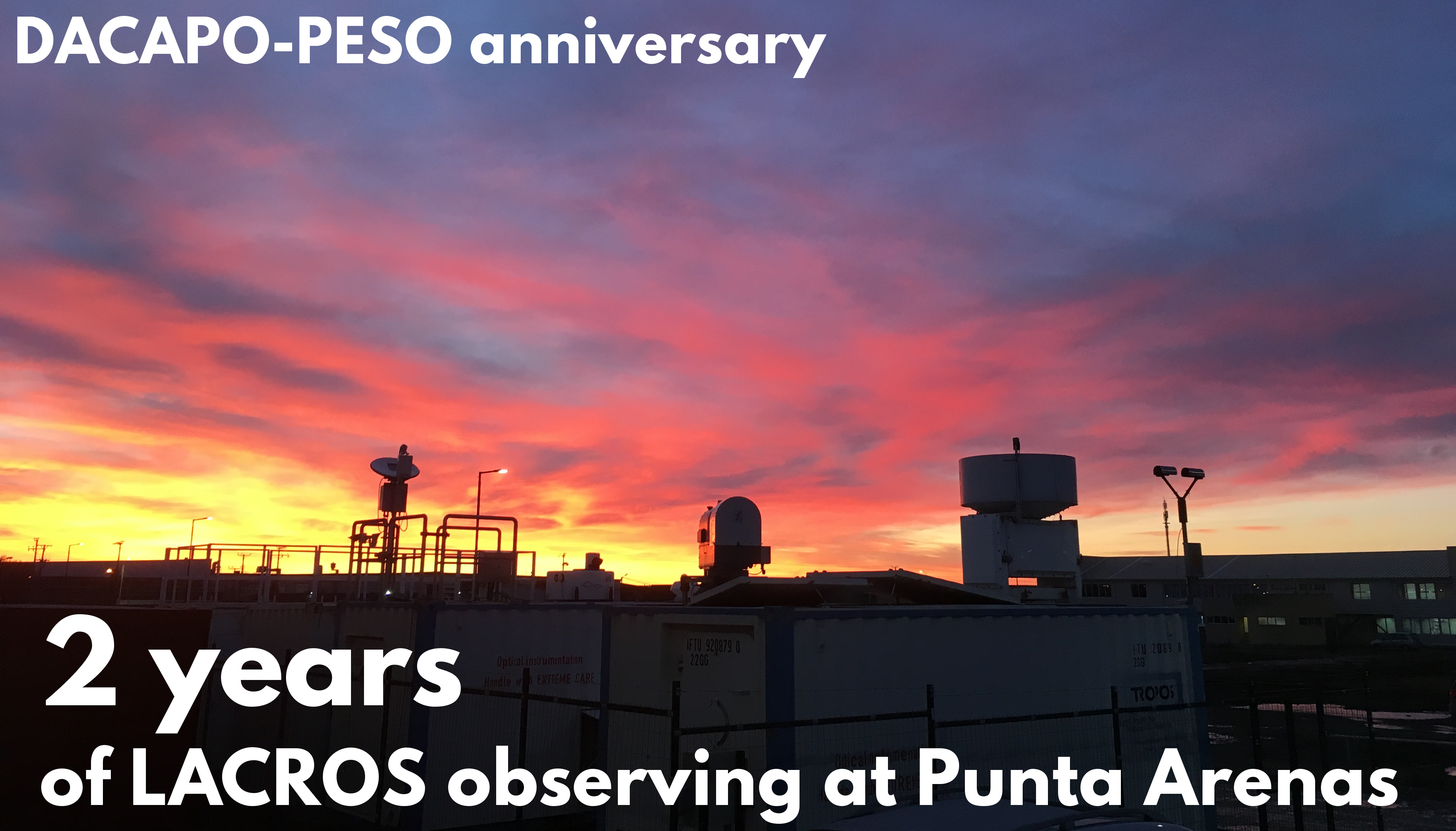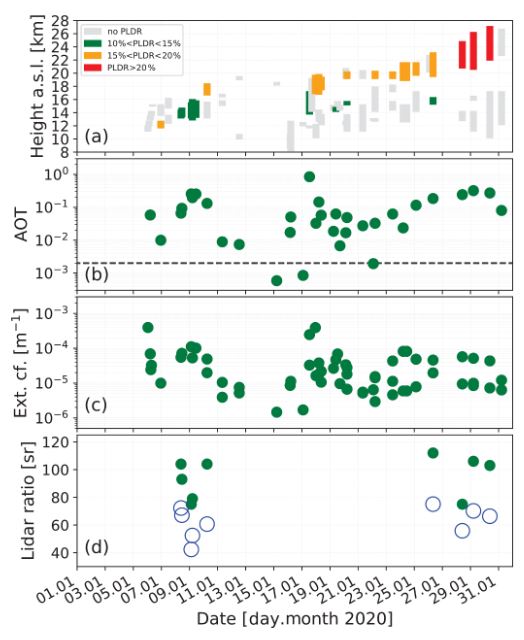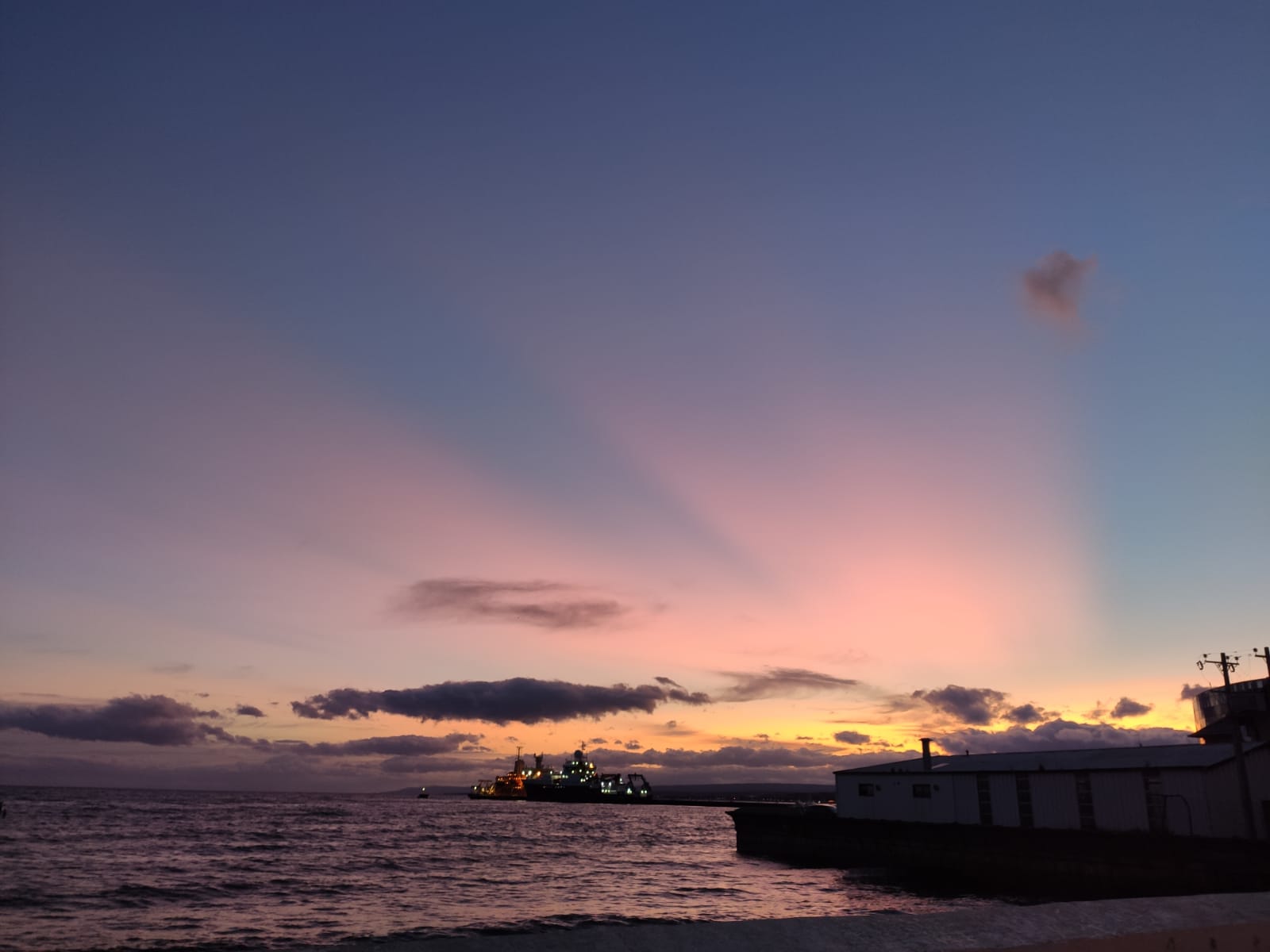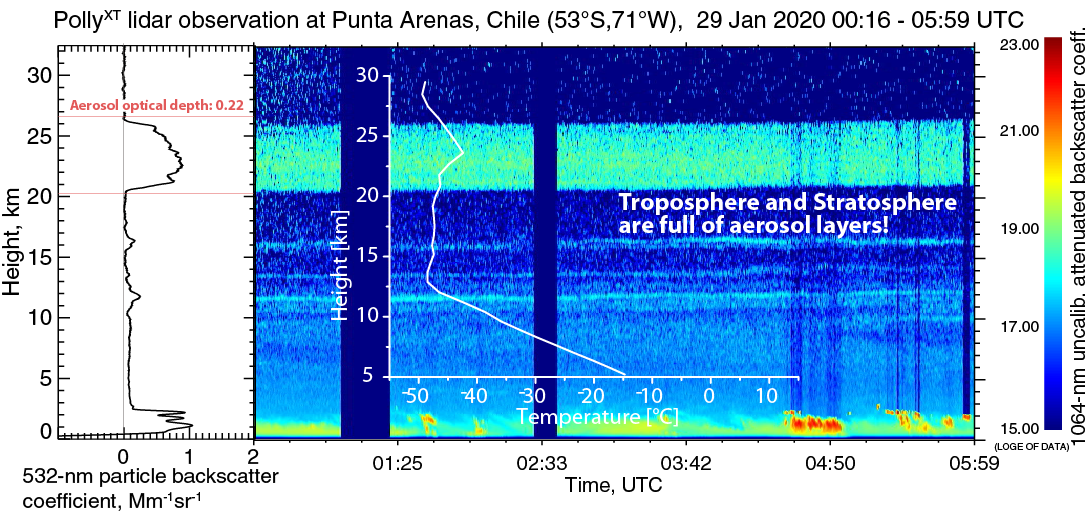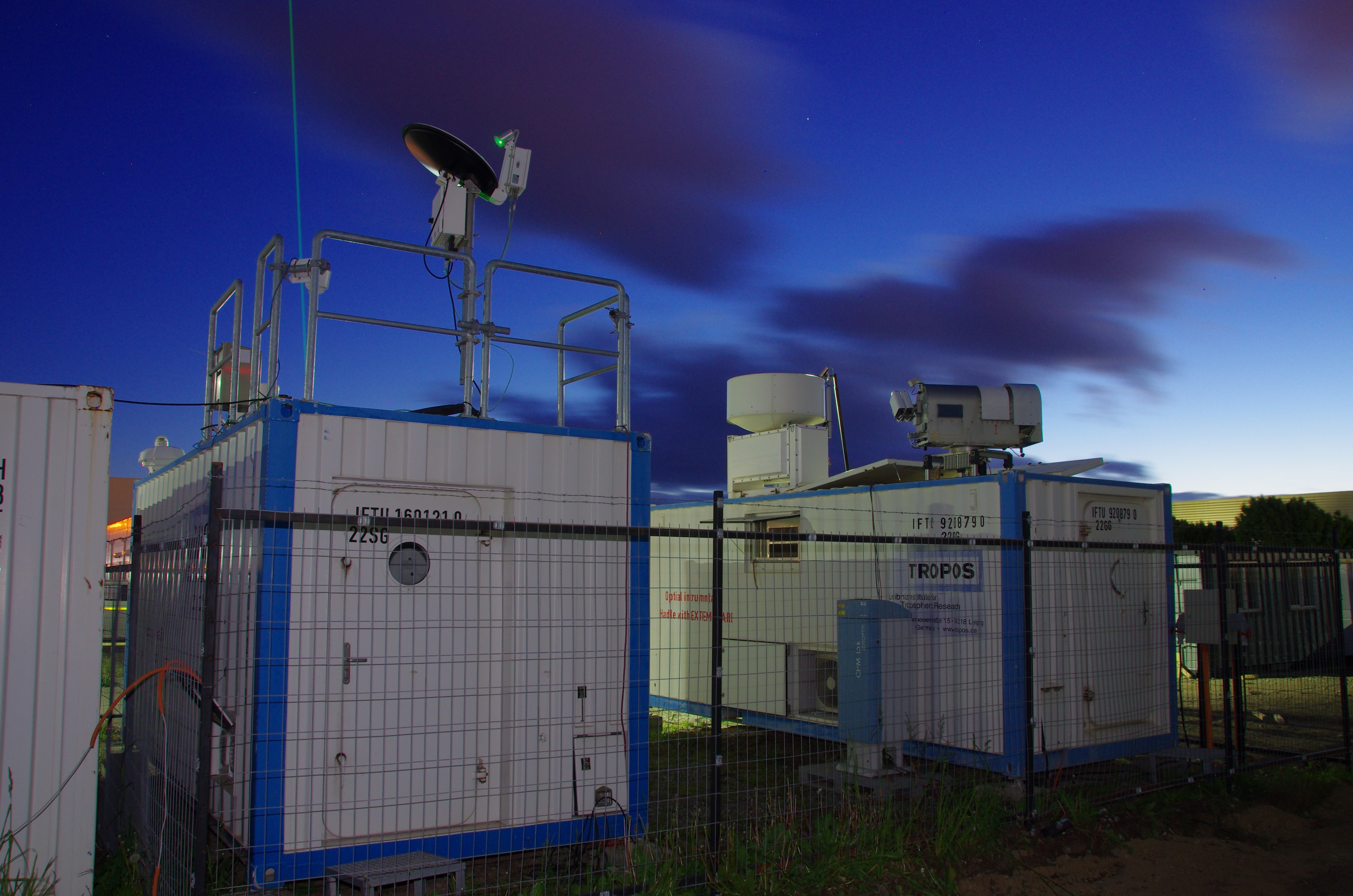Similarly to the ICCP, the Workshop Lidar Measurements in Latin America had to be postponed by one year due to Covid19, but in the end only could be held virtually. Organized by Boris Barja at UMAG, this would have been the perfect opportunity for a reunion at Punta Areans.
Read more: 20 October 2021: XI Workshop Lidar Measurements in Latin America
While the measurements were still ongoing at Punta Arenas, we had a small 2-afternoon hybrid workshop for discussing current results and future collaborations. Meanwhile quite a few people are looking at the data for various projects.
In case you plan to attend the International Conference on Clouds and Precipitation 2021, a few talks also deal with DACAPO-PESO data
Time to celebrate (a bit)! Today marks two years of LACROS observations at Punta Arenas in the framework of DACAPO-PESO. Back in 2017, when we started planning this campaign, nobody expected such a long dataset. But with the covid-19 travel restrictions there was no other option, than to continue measuring.
So far, data coverage out of 731 days is quite satisfying:
- MIRA-35 cloud radar: 95.6% (missing mostly Nov 2019)
- PollyXT raman lidar: 93.2% (mostly July 2020)
- Shaun Doppler lidar: >91.8% (mostly Oct 2020)
- + >10 Months LIMRAD observations
When combined, LACROS was fully operational >80% of the time. Due to (some) redundancy, the synergistic products are expected to cover more than ~90% of the time [final processing ongoing].
Quite some results will be presented during the AGU fall meeting. Stay tuned for further information.
Thanks to everybody, who is keeping the measurements running!
[mr]
A first highlight of the now one-and-a-half years of LACROS measurements over Punta Arenas is now published in Atmospheric Chemistry and Physics:
Ohneiser, K., Ansmann, A., Baars, H., Seifert, P., Barja, B., Jimenez, C., Radenz, M., Teisseire, A., Floutsi, A., Haarig, M., Foth, A., Chudnovsky, A., Engelmann, R., Zamorano, F., Bühl, J., Wandinger, U., 2020. Smoke of extreme Australian bushfires observed in the stratosphere over Punta Arenas, Chile, in January 2020: optical thickness, lidar ratios, and depolarization ratios at 355 and 532 nm. Atmospheric Chemistry and Physics 20, 8003–8015. https://doi.org/10.5194/acp-20-8003-2020
The paper describes the plume of wildfire smoke form Australia observed earlier that year. A stratospheric aerosol optical thickness of 0.85 caused by smoke is unprecedented in the southern hemisphere.
Another paper is also on it's way to publication in the Bulletin of the American Meteorological Society. There, the Year of Polar Prediction community uses water vapor observations from LACROS to investigate atmospheric rivers on their way to Antarctica:
Bromwich, D.H., Werner, K., Casati, B., Powers, J.G., Gorodetskaya, I.V., Massonnet, F., Vitale, V., Heinrich, V.J., Liggett, D., Arndt, S., Barja, B., Bazile, E., Carpentier, S., Carrasco, J.F., Choi, T., Choi, Y., Colwell, S.R., Cordero, R.R., Gervasi, M., Haiden, T., Hirasawa, N., Inoue, J., Jung, T., Kalesse, H., Kim, S.-J., Lazzara, M.A., Manning, K.W., Norris, K., Park, S.-J., Reid, P., Rigor, I., Rowe, P.M., Schmithüsen, H., Seifert, P., Sun, Q., Uttal, T., Zannoni, M., Zou, X., 2020. The Year of Polar Prediction in the Southern Hemisphere (YOPP-SH). Bulletin of the American Meteorological Society 101, E1653–E1676. https://doi.org/10.1175/BAMS-D-19-0255.1
[mr]
This is an update on the currently observed huge footprint of the Australian bushfires in the atmosphere over Punta Arenas. Already since several days we are observing an astonishingly high aerosol load over Punta Arenas. The sky during dawn and dusk remains in purple-orange lights produced by the illuminated stratospheric smoke plumes (photo taken by Cristofer Jimenez):
The aerosol signatures are well observed by our lidar system PollyXT, which is - let's keep fingers crossed for the future - currently working well in documenting the evolution of the smoke plume over our DACAPO-PESO field site at University of Magallanes. That's actually a new job for the system which it serves already since mid of November 2019, when first tropospheric plumes of the Australian fires arrived over Punta Arenas. Before, the Polly lidar was deployed to provide primarily information about the microphysical structure of clouds in the presumably aerosol-free troposphere over Punta Arenas.
On 28 January, the Australian smoke aerosol spreads from the near surface up to 26.5 km height.
And the smoke plume is still rising. This is likely caused by radiative heating of the plume that leads to an upward motion. At least the original injection height of the smoke by the fires and pyrocumulonimbus activity in Australia cannot explain such extraordinary layer heights.
Aerosol optical depth of the main layer (22 – 26 km) is 0.22 @ 532 nm wavelength (for experts: derived with the Klett-Fernald method, lidar ratio=60 sr and smoothing length = 300 m). This means, that only 80% of sunlight reach the Earth’s surface unaffected by scattering – making the sky much more ‘milky’. The normal value down there is 99%.
This fire season will definitely leave a footprint in the southern-hemispheric stratosphere (above approx. 12 km height) for the next months to years.
Find below an impression of how the LACROS field site looks like at night:
[ps]
Page 1 of 4

